Film Review: Seven Samurai (1954)


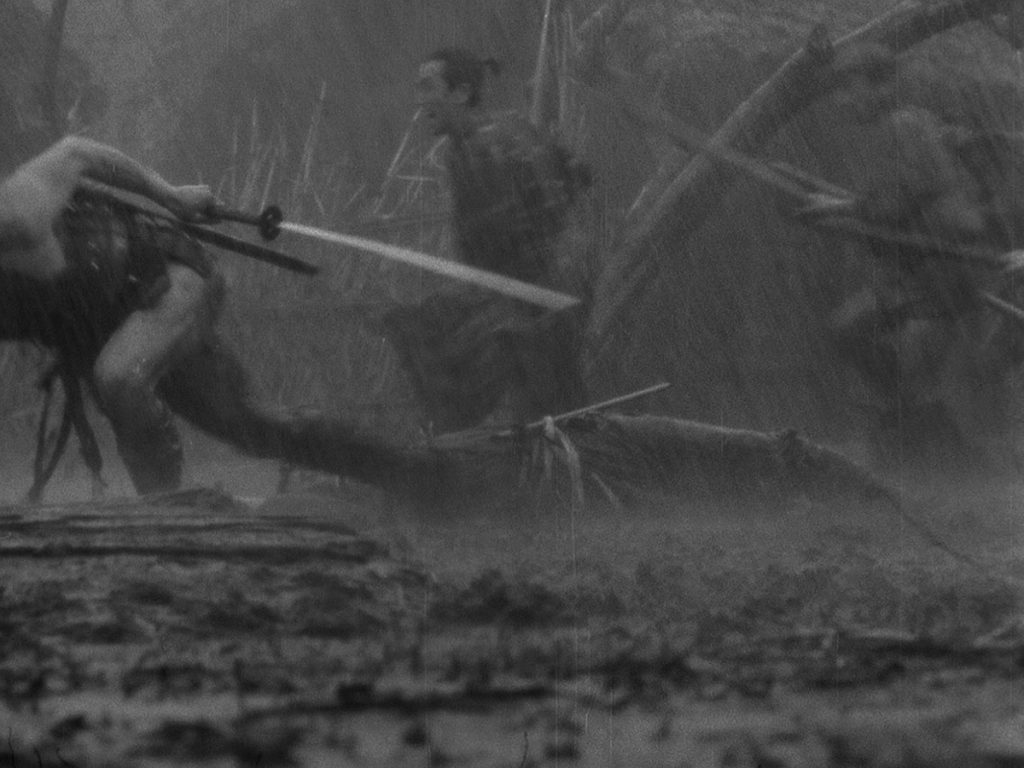
In 1954, Japanese filmmaker Akira Kurosawa directed what many film critics, historians, and enthusiasts consider to be one of the finest achievements in cinematic history. Seven Samurai is the story of a small farming village in 16th century Japan who hires a group of masterless samurais, or Ronin, to defend them against bandits who are set to return in the spring to plunder their village of food and women. It’s a larger than life epic that, even at three and a half hours, doesn’t have a single wasted frame, drawing you in and not letting you leave until it’s finished with you. With its innovative use of telephoto lenses, rhythmic score, sweeping camera movements, and layered themes and storylines, Seven Samurai is a film that transcends convention and genre. There’s a reason it’s on the top of every credible film expert and historian’s list. Put simply, Seven Samurai is a masterpiece.
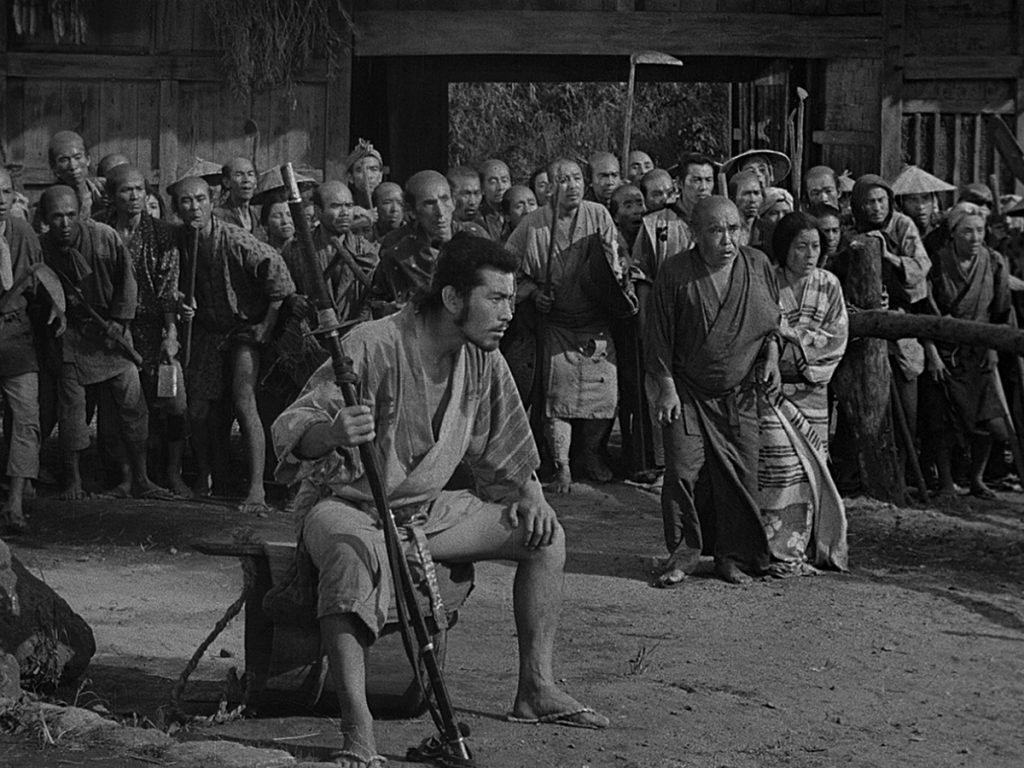
The film has several themes working within it. Kurosawa was considered Japan’s most “Western” director, meaning he tended to stray from Japan’s mindset of everyone being a cog in the societal wheel. He admired American cinema and, some would say, made better western genre films than the Americans did. Many of his films were remade in both Hollywood and Italy, set in the American West rather than in feudal Japan. In the film, Kurosawa emphasizes that, in order to achieve a goal, everyone must work together as a group, and that group must move and act as one. This very Japanese notion is countered by the very American idea that individual heroism is possible and desired, albeit within the group structure.
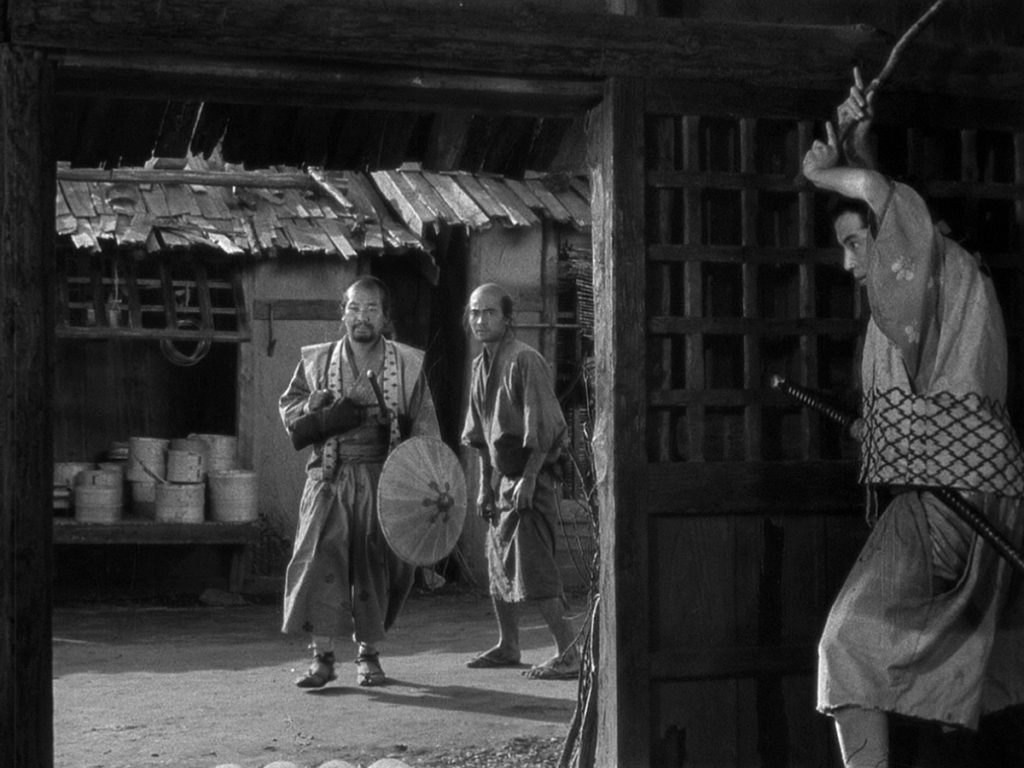
The samurais in the film are presented as individuals while the farmers and the bandits, with a few exceptions, are presented as one mass. Kurosawa mixes the group vs. individual notion by showing the heroism of the samurai as individual feats and those of the peasants as group efforts, combining Eastern and Western attitudes towards society. It is also important in the film that these two groups are never to mix outside of their stated goals. The farmers fear the samurai, afraid that they will defile their women, among other things. Hiring them is the last resort and as soon as the battle is over, the farmers want nothing to do with them.
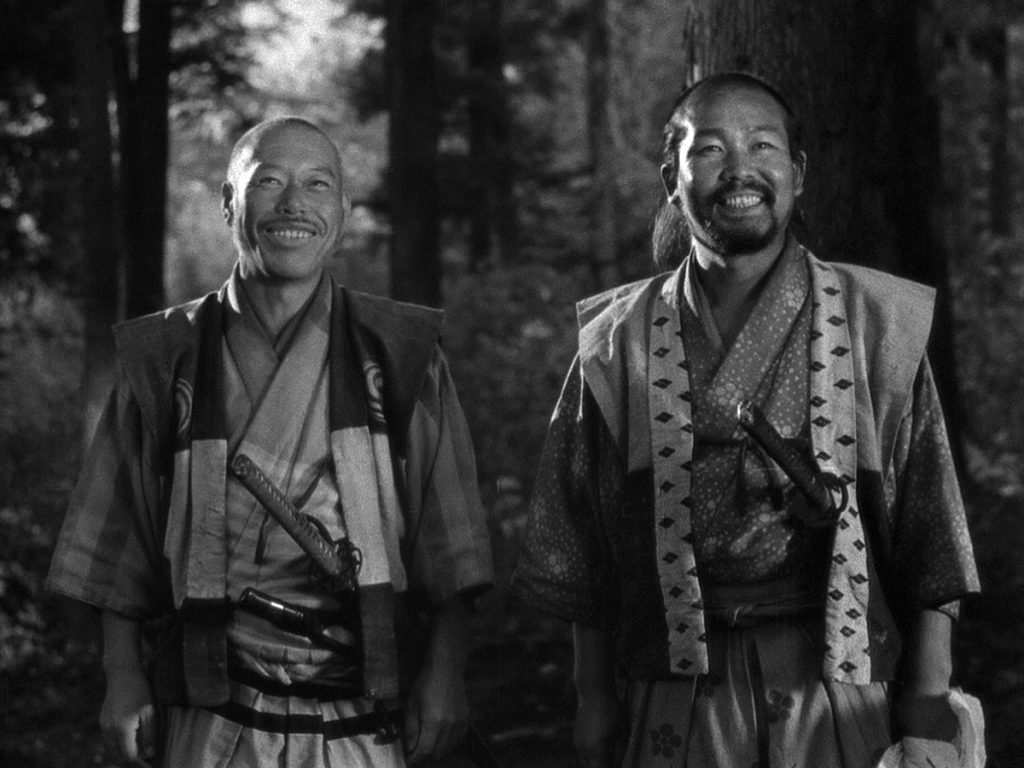
In Seven Samurai, Kurosawa implemented a number of camera and editing techniques to tell his story. The final battle scene is a clinic on how action on film should be approached, but there are a lot of intricacies in the seemingly simple scenes as well. For example, often in the film, there are a number of characters shown at once, but through the use of deep focus and very meticulous staging, you can clearly see all of them. When characters move about the frame, all of the other characters seem to move with them, everyone staying in focus and visible, almost taking on an action sequence quality even though it’s a relatively stationary scene.

These scenes often have a dozen or more characters in them but they never seem crowded or confusing, a masterful feat considering that many of these scenes take place in small rooms. Everyone in the scene is always represented, whether they have speaking parts or not; their expressions, mannerisms, and quirks are just as important to the story as anyone’s lines or deeds. The use of deep focus is very important throughout the film. We clearly see everything that is happening in every scene, and often, the action is taking place on three different planes: a foreground, middle, and a background.
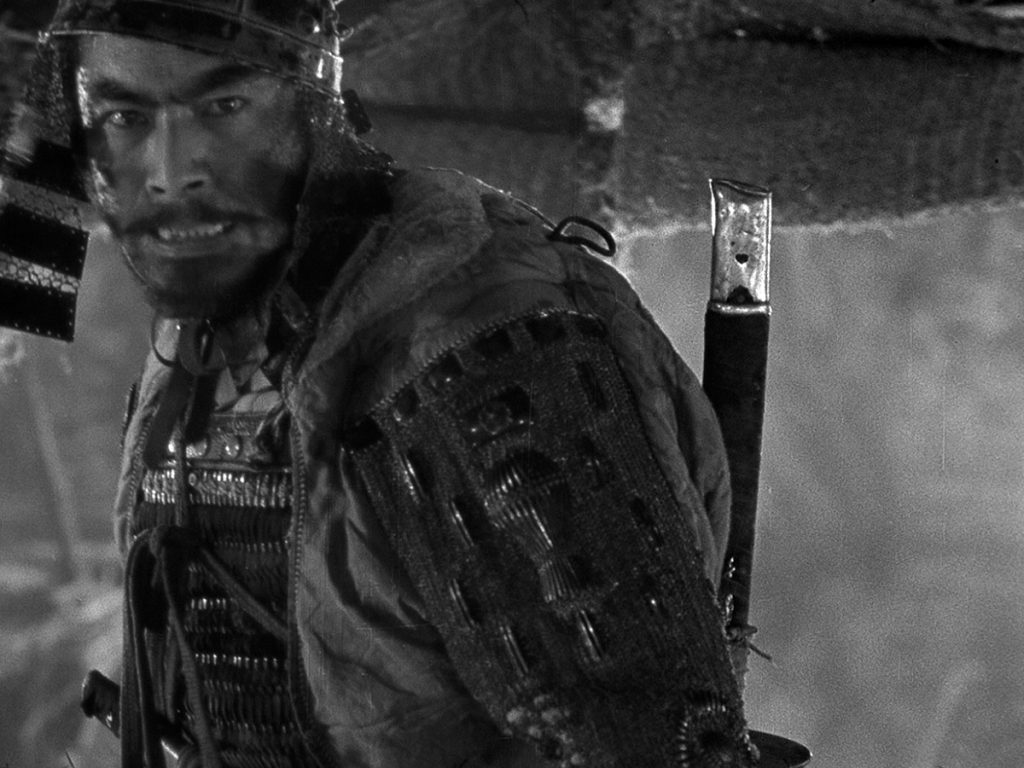
Kurosawa wanted us to see everything because every detail is necessary to tell the tale he wanted to tell. It was important to Kurosawa to maintain continuity in the action, thereby keeping us in the story. To achieve this, he used multiple cameras. This technique allowed for seamless editing, enabling him to cut on movement or action expertly. By intermixing fast cuts with longer takes, coupled with the use of a variety of lenses, he was able to give a pulse to the battles. The quick cuts of the fighting are offset by long takes which act as a relief to the tension, giving us a quick respite before jumping back into the action. The camera also tracks the action into and through houses and barns, creating a sense of claustrophobia and danger, all the while keeping focus on every face and every aspect of the scene.
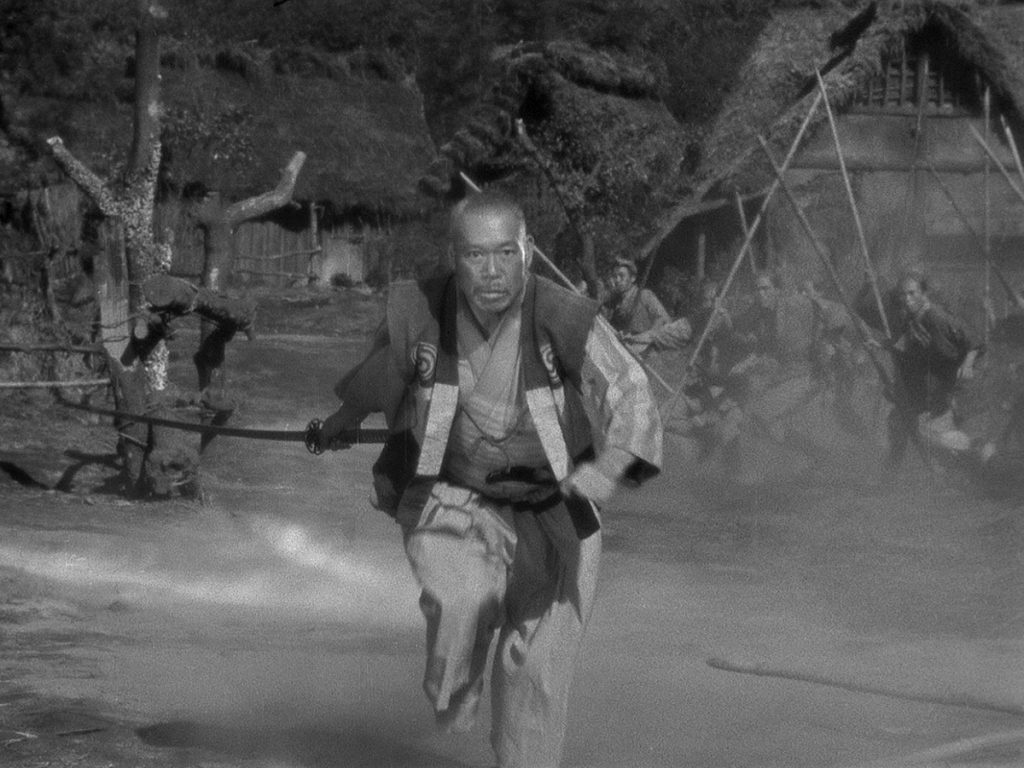
These tracking shots keep us right in the heart of the fight. We become emotionally and visually part of the action, and we move forward with the story. The lighting of the film should also be noted. As with the deep focus, the lighting never seems to leave anyone out. There is certainly a mood and tone to how it is used, but even in the dark scenes, everyone is still visible. There are no shadowy figures or mysterious strangers lurking on the fringes of the scenes. All aspects are lit with maximum efficiency, enhancing the group dynamic of the two central groups of the film: the farmers and the samurai. Many of the techniques used throughout the film have become staples in filmmaking, but few have mastered it as artfully as Kurosawa.
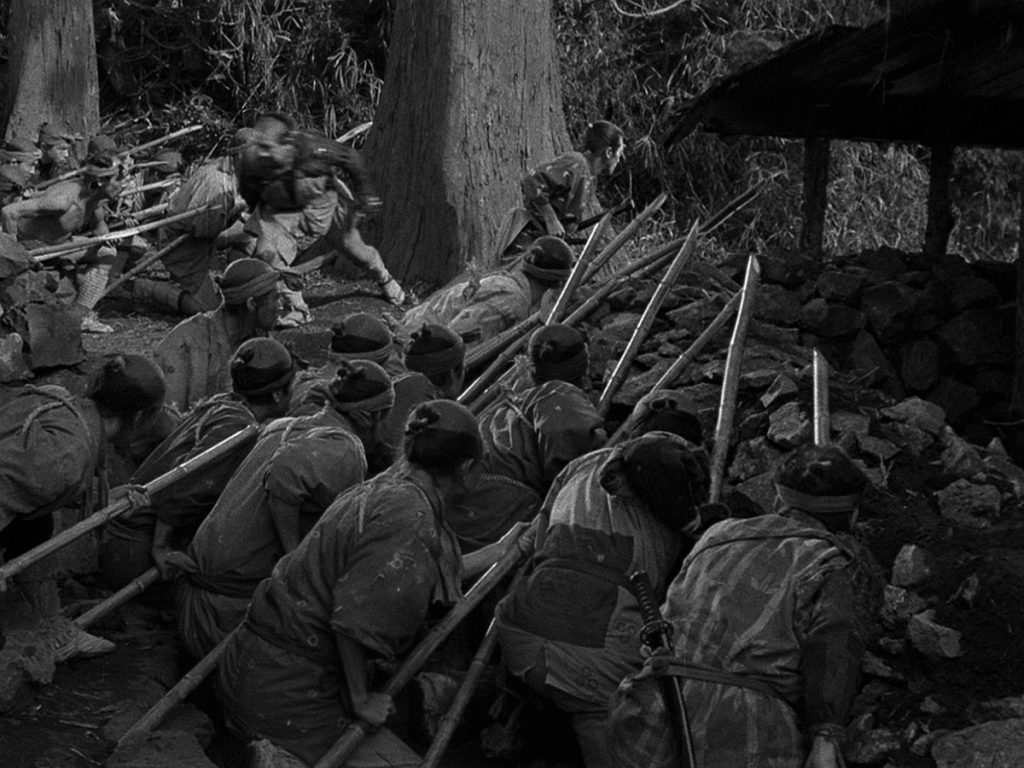
With its mix of rhythmic drumming, bass-filled chants, and sometimes downright modern sensibilities, the music of Seven Samurai paints a picture of its own. The film is bookended by Fumio Hayasaka’s very rhythmic motif, which we often find when dealing with the villagers. They live and work to a specific beat.
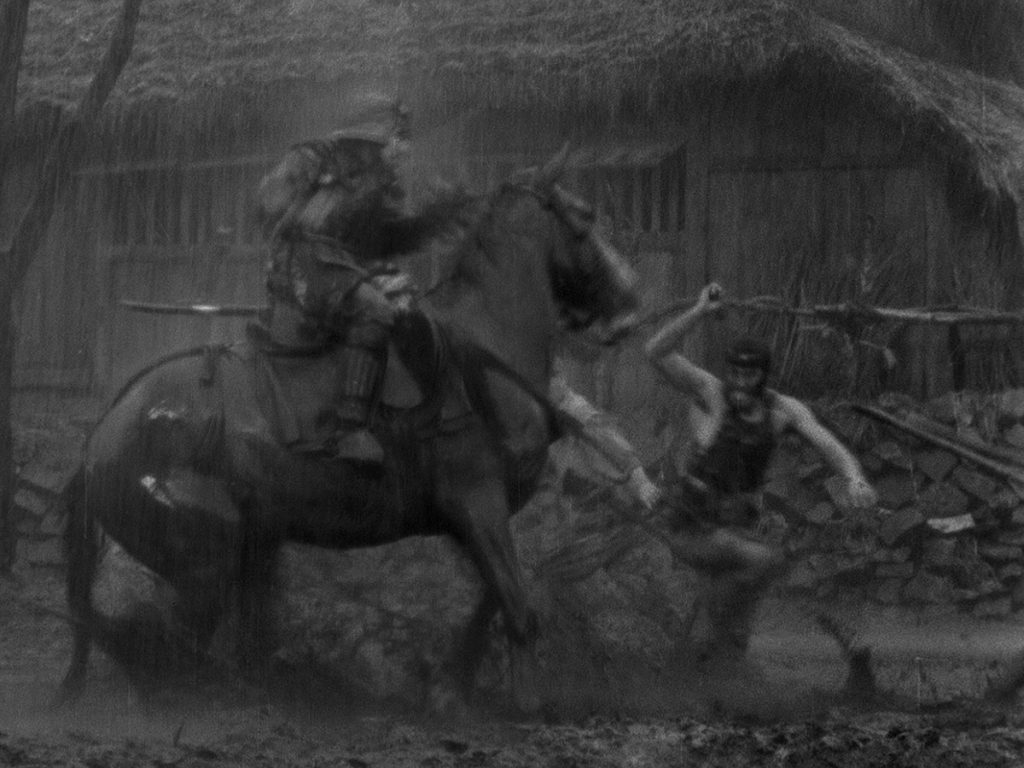
The film opens with dire, foreboding tones set to a beat that hints at doom. We then quickly see that the village may very well be doomed indeed. The final sequence in the film is also very rhythmic, but this time it sounds more hopeful. The villagers and samurai have been victorious, but even with the heavy loss of life, the villagers remain optimistic about the future. The singing and chanting of the last scene exemplify this while pointing out that the samurai are now out of place and need to move on. It’s a similar beat to the opening scene but the tone has changed dramatically. We hear this beat when we visit the old man in his hut as well. The plodding from the water wheel attached to the exterior of his house sets the pace at which the villagers live.
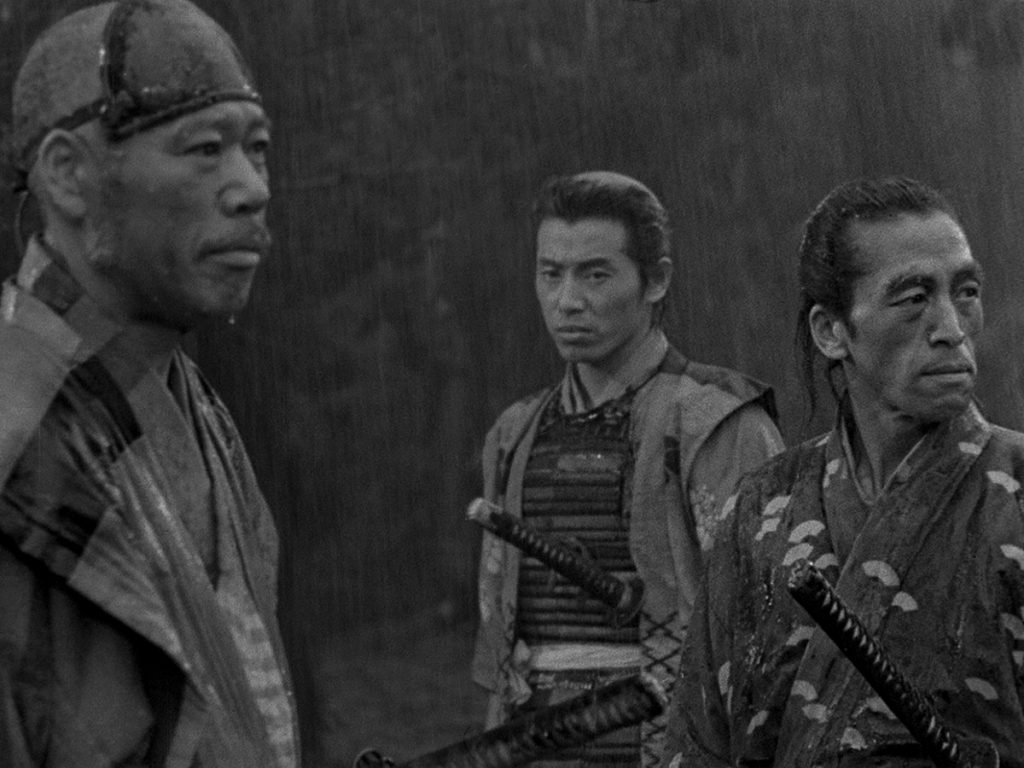
The samurai, on the other hand, are often musically represented with a much more upbeat and modern score. The jovial nature of their music is used to offset the mundane and desperate music of the farmers. Although they are risking their lives, the samurais do so with relish and enthusiasm as opposed to the farmers, who do so out of necessity. The music that represents each class also represents this difference. Careful attention to a film’s score and how it represents its characters, moods, and emotional impact is an essential aspect of filmmaking and another area where Kurosawa has demonstrated his mastery.
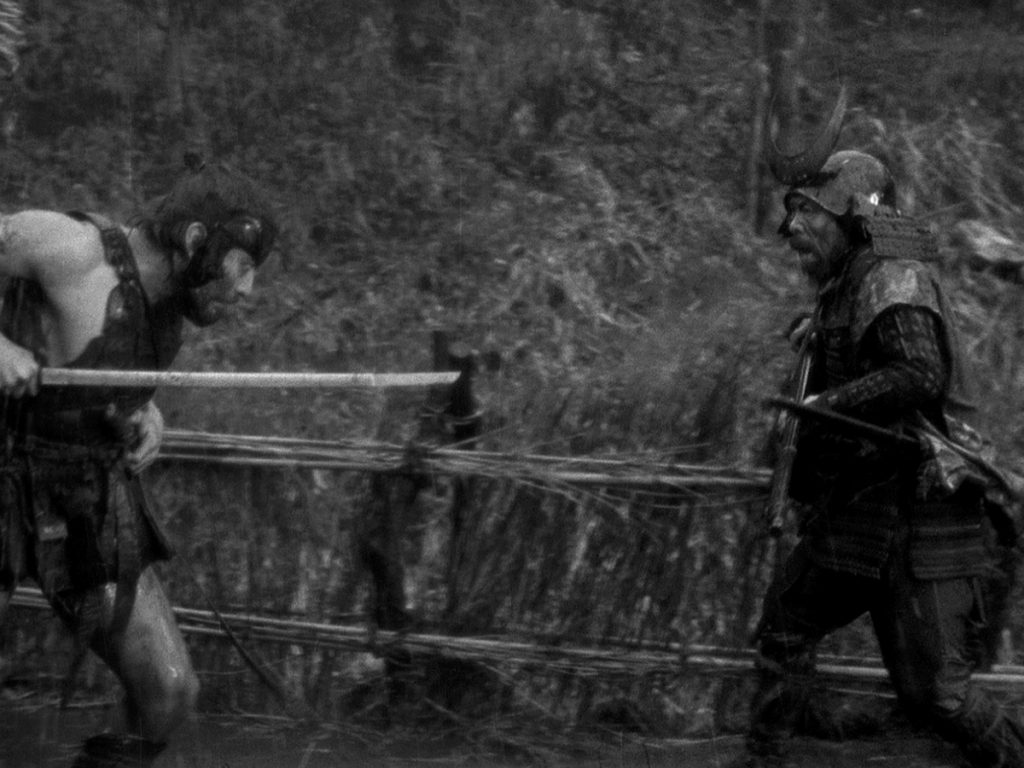
Akira Kurosawa is, quite possibly, the most copied director in movie history. Whole volumes have been written about his contributions to the medium. His influence has touched every genre you can think of. The list of directors, editors, and writers who freely admit to not only being influenced by him but downright stealing his ideas and concepts is endless. He took a simple story of a village in Japan and turned it into one of the most highly regarded films of all time. Films like this just aren’t made anymore, and that’s a shame, but the magic of film is that it’s a record of what was, and this record will stand forever.
Japan • 1954 • 207 minutes • Black & White • 1.33:1 • Japanese • Spine #2
Criterion Special Features Include
- New, restored high-definition digital transfer, with the original uncompressed monaural soundtrack and an optional DTS-HD Master Audio soundtrack on the Blu-ray edition
- Two audio commentaries, one featuring film scholars David Desser, Joan Mellen, Stephen Prince, Tony Rayns, and Donald Richie, and the other Japanese film expert Michael Jeck
- Fifty-minute documentary on the making of Seven Samurai, created as part of the Toho Masterworks series Akira Kurosawa: It Is Wonderful to Create
- My Life in Cinema, a two-hour video conversation from 1993 between directors Akira Kurosawa and Nagisa Oshima
- Seven Samurai: Origins and Influences, a documentary looking at the samurai traditions and films that helped shape Kurosawa’s masterpiece
- Theatrical trailers and teaser
- Gallery of rare posters, behind-the scenes photos, and production stills
- New and improved English subtitle translation
- PLUS: A booklet featuring essays by Kenneth Turan, Peter Cowie, Philip Kemp, Peggy Chiao, Alain Silver, Stuart Galbraith, Arthur Penn, and Sidney Lumet and an interview with Toshiro Mifune from 1993
